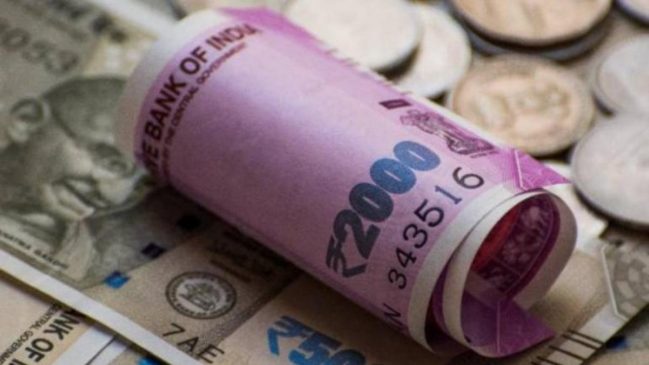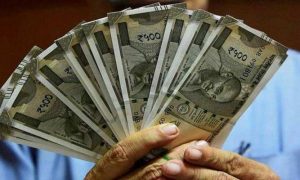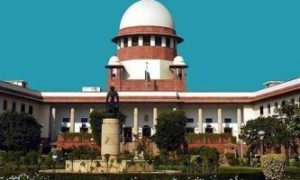India’s banking system liquidity is likely to reach pre-pandemic levels by the end of this financial year as the central bank embarks on an aggressive liquidity withdrawal strategy to tame inflationary pressures, bankers and economists say.
On May 4, the Reserve Bank of India increased the rate at which it lends short-term funds to commercial banks by 40 basis points to 4.4 percent and upped the Cash Reserve Ratio (CRR), the portion of deposits that banks must hold in liquid cash, by 50 basis points to 4.5 percent. One basis point is one-hundredth of a percentage point.
The CRR increase, effective the fortnight of May 21, means that banks will have a relatively low lending capacity in terms of funds and so would raise interest rates on deposits to raise funds. The CRR hike is expected to withdraw liquidity to the tune of around Rs 87,000 crore.
“The RBI is adopting a simple rationale that in order to normalise rates, liquidity withdrawal is needed, that too in large chunks. It is a clear sign that the RBI is worried about inflation,” said Abhishek Upadhyay, senior economist at ICICI Primary Dealership.
Read More: ICICI Bank Increases Fixed Deposit Interest Rates after RBI Rate Hike; Check FD Rates
India’s headline retail inflation rate, measured by the Consumer Price Index (CPI), shot up to a 17-month high of 6.95 percent in March.
Upadhyay expects the liquidity surplus to reach pre-pandemic levels by the end of this fiscal year.
“A CRR hike was quite effective in that sense, as it takes out about Rs 87,000 crore of rupee liquidity in one go. We would ideally have preferred a remunerative CRR in which banks get some rate of return on their balances,” he added.
How does it work?
Simply put, banking system liquidity is calculated on the basis of supply and demand for central bank money. The RBI uses the Liquidity Adjustment Facility (LAF) window to manage liquidity.
Using this window, the central bank lends short-term funds to banks at the repo rate, accepting government securities as collateral, and sucks out funds from banks at reverse repo rate. Presently, the repo and reverse repo rate stand at 4.40 percent and 3.35 percent, respectively.
The RBI has the LAF framework and a number of liquidity management tools at its disposal to manage inflation in the economy by increasing and reducing money supply.
RBI pumped in money during the pandemic
Bloomberg data shows that India’s banking system liquidity surplus, which was about Rs 4 lakh crore before the pandemic hit India, swelled to Rs 6.9 lakh crore by December 2020, and to a record high of Rs 9.96 lakh crore by September 2021.
After the RBI initiated liquidity withdrawal steps, banking system liquidity shrank to Rs 8.1 lakh crore as of March-end, and currently stands at Rs 6.3 lakh crore.
To put it in context, since the start of the pandemic in March 2020, the RBI infused massive liquidity in the system, cut the repo rate to a historic low of 4 percent and maintained an accommodative stance to ensure easy availability of credit in the economy.
This was by purchasing government securities from banks in the open market, through dollar purchases in the forex market to prevent a sharp appreciation in the local currency and by conducting so-called Targeted Long Term Repo Operations for credit-starved sectors at the repo rate of 4 percent for a period of one to three years.
Read More: Kotak Mahindra Bank, ICICI Bank, Bandhan Bank, Others Hike FD Interest Rates; Check Here
Once the pandemic stress began to wane, the RBI gradually began withdrawing surplus liquidity from the banking system. In January 2021, it introduced long-term variable rate reverse repo operations (VRRR), and eventually increased the tenure of such operations.
Since October 2021, it also stopped its own quantitative-easing-styled Government Securities Acquisition Programme (GSAP). In April this year, it introduced a collateral-free Standing Deposit Facility to drain excess liquidity.
‘Liquidity withdrawal to be accelerated’:
For the surplus to reach pre-pandemic levels, more action would be warranted from the RBI, which is likely in the upcoming policy announcements, experts said.
This is mainly because retail inflation is expected to stay elevated in the coming months. Economists expect April’s retail inflation number to top 7 percent, way above the central bank’s target, making it imperative for the central bank to accelerate liquidity withdrawal.
“The RBI will be unnerved with the current level of surplus,” said an assistant vice president of treasury at a leading private sector bank, requesting anonymity. “They could come with another 50 bps CRR hike in either June or August and come up with dollar sell-buy swaps of around $15 billion. Impact of these would be around Rs 2 lakh crore, before the August or September meeting.”
To be fair, the RBI has already conducted dollar sell-buy swaps worth $10 billion in March and April. Under the sell-buy swap auction, a bank buys US dollars from the RBI in exchange for rupees and simultaneously agrees to sell the same amount of dollars at the end of the swap period.
“We do not rule out the probability of more sell-buy dollar swaps from the RBI, especially since tools like open market bond sales are not feasible now,” ICICI Securities Primary Dealership’s Upadhyay said.
“In the interim, factors like CIC (currency in circulation) leakage and a likely balance of payment deficit could automatically dent liquidity surplus.”
According to Upasna Bhardwaj, Senior Economist at Kotak Mahindra Bank, the RBI is likely to opt for another CRR hike to the tune of 50 bps in the June policy. Additionally, the likelihood of higher currency in circulation and swap auctions will reduce liquidity surplus in the next few quarters, she said.
This could take the liquidity surplus to near pre-pandemic levels as early as October-December, Bhardwaj added.
Impact on banking system
CRR does not earn any interest for banks. With a hike in the CRR rate and potentially tighter liquidity situation, banks would have to lure depositors with higher fixed deposit rates to attract more funds.
Similarly, lending rates would rise as banks would want to pass on the impact of the rate hike to borrowers.
Already, Bank of Baroda and ICICI Bank have increased their lending rates and more banks are likely to follow suit in the coming days, analysts said.
Lenders like Bandhan Bank, Kotak Mahindra Bank, Jana Small Finance Bank, Bank of Baroda and ICICI Bank have announced deposit rate hikes across multiple tenor baskets for retail customers.



































